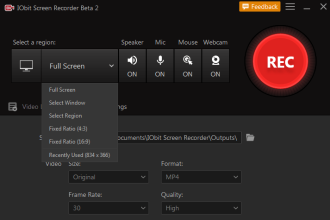In the realm of construction, the integration of software for reality capture has revolutionized how professionals approach project planning and execution. This technology enables a transformative journey through a construction site’s timeline, offering a digital bridge to the past and a visionary tool for the future.
The Evolution of Visualization in Construction
Historically, the construction industry relied on tangible artifacts like blueprints, maps, and physical models to envision and execute projects. Today, digital environments and virtual reality have shifted this paradigm. They allow for a more dynamic interaction with the project’s lifecycle, leveraging sophisticated, manipulable images that convey complex ideas efficiently. This new language of visualization is not just about seeing but understanding and interacting with the temporal dimensions of construction sites.
Bridging Past and Present
The capability to revisit a site’s past stages offers invaluable insights. It transforms risk assessment, progress tracking, and project management. By providing a multidimensional view of the construction process, stakeholders can assess, learn from, and build upon historical data, ensuring that past oversights inform future decisions, thereby enhancing overall project efficiency.
Enhancing Project Management with Historical Data
With the advent of technologies like 3-D modeling and simulation, project managers can now access a virtual representation of their construction site at any previous point in time. This access to historical data is pivotal for making informed decisions, troubleshooting issues, and validating the project’s progression against initial plans, thereby mitigating risks and avoiding costly mistakes.
The Impact of Technological Advancements
The journey from traditional to digital has been transformative, with tools like sequential narratives and immersive experiences reshaping our approach to construction planning. These advancements provide a more comprehensive, accurate, and engaging method to showcase and examine the historical context of any ongoing project.
From CAD to Reality Capture
The shift from Computer-Aided Design (CAD) to Building Information Modeling (BIM) and now to sophisticated reality capture software exemplifies the industry’s evolution. These tools have redefined the boundaries of what’s possible, turning erstwhile static plans into dynamic, interactive models that echo the actual state of a construction site over time.
The Socio-Technical Infrastructure of Modern Construction
Today’s software systems embody a confluence of engineering brilliance and creative vision, encapsulating a range of sensibilities from globalism to utopianism. They are not just tools but metaphors that redefine our understanding of design, work, and creativity, reshaping the material reality of our built environment.
Reflecting on the Past to Innovate the Future
Our profound connection with our historical and future landscapes is magnified through the lens of modern technology. This connection is vital, not just for the continuity of memory but for the foundation of innovation in construction practices.
Nostalgia Meets Innovation
The modern construction professional’s ability to virtually traverse the temporal milestones of their project brings a unique form of nostalgia, anchored in data and driven by future possibilities. It’s a blend of reminiscence and forward-thinking, where historical data fuels innovation and foresight.
The Future Shaped by Digital Memories
The construction sites of tomorrow are being shaped today by the digital memories we curate and revisit. These memories, enriched by technology, empower us to create more resilient, efficient, and sustainable built environments, informed by the lessons of the past but engineered for the future.
In Conclusion
The convergence of historical insight and modern technology in construction offers a unique vantage point: a chance to revisit and learn from the past while continuously innovating for the future. As we harness these tools to explore the echoes of past construction sites, we pave the way for a new era where every build is a step toward smarter, more informed, and more sustainable construction practices. In this dynamic landscape, the past informs the present, and the present is ever-evolving, driven by a blend of historical knowledge and cutting-edge technology.















